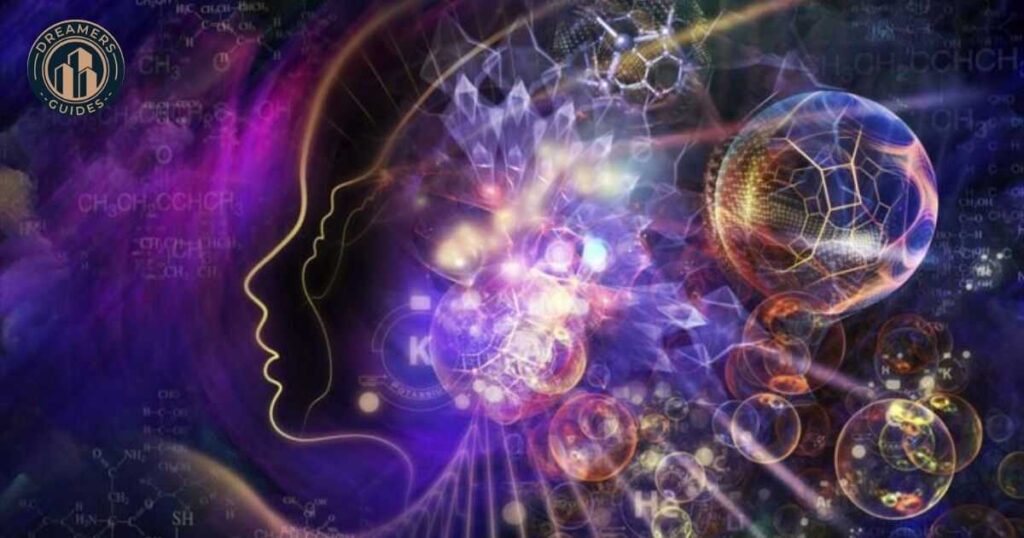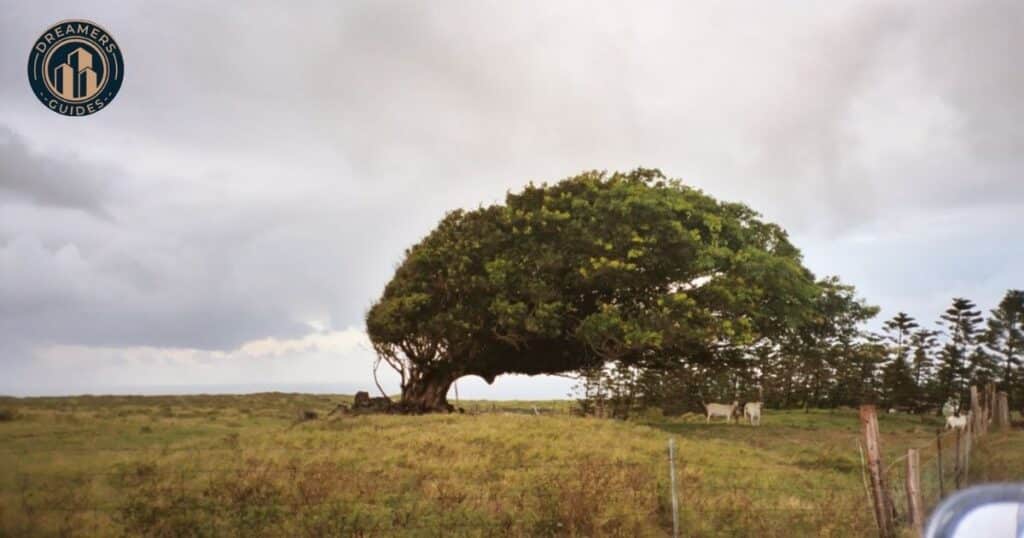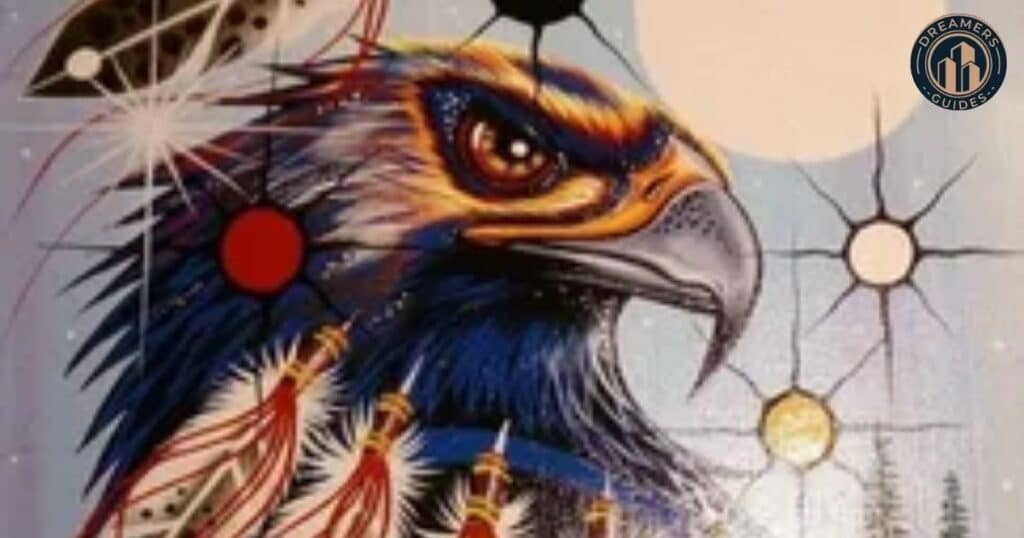Ever felt a gentle breeze caress your face and wondered what it might mean? You’re not alone. For centuries, people across the globe have attributed deep significance to the wind. This invisible force has shaped our world, both physically and culturally. Let’s embark on a journey to explore the rich tapestry of wind symbolism in cultures and religions worldwide.
Wind Symbolism Across Cultures and Religions Around The World
Wind has been a source of fascination for humanity since time immemorial. It’s no wonder that wind symbolism has found its way into countless myths, legends, and belief systems. From the whispers of divine direction to the roar of change and transformation, wind carries a multitude of meanings.
In many cultures, wind represents the breath of life itself. It’s seen as a bridge between the physical and spiritual realms, carrying messages from the divine. This universal fascination with wind has led to a rich tapestry of symbolism that spans continents and centuries.
What is Wind?
At its core, wind is simply air movement caused by differences in atmospheric pressure. This scientific explanation, while accurate, barely scratches the surface of wind’s complexity and significance. Wind is not just a physical phenomenon; it embodies a rich tapestry of symbolism, emotion, and cultural meaning that has captivated humanity for centuries.

Forms and Symbolism of Wind
Wind manifests in various forms, from gentle zephyrs that caress the skin to fierce hurricanes that unleash nature’s fury. Each type of wind carries its own unique symbolism and significance. A soft breeze might evoke feelings of tranquility and peace, representing whispered secrets or gentle guidance as it rustles through the leaves. This subtle movement can inspire reflection, serving as a reminder of the quiet forces that shape our lives.
Conversely, a powerful gust of wind can symbolize dramatic change or divine intervention. It represents a force that can uproot the familiar and propel us into new territories, both literally and metaphorically. In literature and art, such winds often signify transformation, heralding the arrival of new beginnings or the end of an era. The tempestuous nature of strong winds can also reflect inner turmoil, encapsulating the struggles we face as we navigate life’s challenges.
Cultural Significance of Wind
Culturally, wind has been revered and feared in equal measure. Many ancient civilizations worshipped wind deities, believing that these powerful forces controlled the fate of crops, voyages, and even lives. In mythology, the wind often serves as a messenger, carrying news across vast distances, connecting people and places. This notion of wind as a communicator emphasizes its role in bridging gaps and fostering relationships, whether between lovers, friends, or distant lands.
Wind in Modern Society
In modern society, wind continues to inspire. It fuels our renewable energy sources, symbolizing a shift toward sustainability and innovation. Wind turbines stand as modern monuments to our quest for harnessing nature’s power, reminding us of our responsibility to coexist with the environment.
Ultimately, wind is more than just moving air; it is a dynamic force that resonates deeply within our collective consciousness. Whether it’s a gentle breeze that brings comfort or a raging storm that demands respect, wind invites us to reflect on the invisible currents that shape our world and our lives. Embracing the multifaceted nature of wind enriches our understanding of its profound impact, reminding us that even the most ephemeral elements can hold deep meaning.
Significance of The Wind In Cultures Around The World
Wind’s importance in human culture can’t be overstated. Throughout history, it’s been crucial for navigation, agriculture, and energy production. But beyond these practical applications, wind has captured our imagination in profound ways.
In literature and art, wind often serves as a powerful metaphor. It can represent everything from the winds of change to the breath of God. Wind imagery is found in countless poems, paintings, and stories across cultures. For example, in Emily Bronte’s “Wuthering Heights,” the wild winds of the moors mirror the tumultuous emotions of the characters.
Top Most Common Wind Symbolism
Change and Transformation
Wind, with its ever-shifting nature, is a perfect symbol for change and transformation. Just as the wind can reshape landscapes over time, it represents the power of change in our lives. This symbolism is deeply ingrained in many cultures, reflected in phrases like “the winds of change.”

In literature and mythology, wind often heralds significant transformations. For instance, in L. Frank Baum’s “The Wizard of Oz,” a tornado (an extreme form of wind) transports Dorothy to a magical land, setting off her journey of personal growth and metamorphosis.
Read More : Winter Symbolism And Meaning Around The World
Freedom and Independence
The unbound nature of wind makes it a potent symbol of freedom and independence. Wind knows no borders or boundaries, moving freely across the earth. This aspect of wind symbolism resonates deeply with the human desire for autonomy and liberation.
Throughout history, wind has been associated with rebels and free spirits. In many cultures, wind gods are often depicted as wild and untamable. This symbolism of freedom is also reflected in popular culture, from the “free as the wind” idiom to songs celebrating the liberating power of the open road and the wind in one’s hair.
Renewal and Rebirth

Wind plays a crucial role in nature’s cycles of renewal and rebirth. It carries seeds to new locations, helps pollinate plants, and clears away dead leaves, making way for new growth. This natural process has led many cultures to associate wind with concepts of rejuvenation and new beginnings.
In spiritual contexts, wind is often seen as a cleansing force. Many religions have rituals involving wind or breath to symbolize purification and renewal. For example, in some Native American traditions, smudging ceremonies use smoke (often described as carrying prayers on the wind) to cleanse spaces and individuals.
Travel and Exploration
Wind has long been associated with journey and adventure. For centuries, sailors relied on wind to power their vessels across vast oceans. This connection has led to wind symbolizing exploration, discovery, and the human spirit of wanderlust.

In mythology and literature, wind often guides or challenges travelers. The Greek god Aeolus, ruler of the winds, plays a significant role in Homer’s “Odyssey,” both helping and hindering Odysseus on his epic journey. This symbolism of wind as both a helper and a obstacle in travel reflects the unpredictable nature of journeys and life itself.
Communication
Wind’s ability to carry sounds, scents, and small objects over long distances has made it a symbol of communication in many cultures. The idea of wind as a messenger is found in numerous myths and legends around the world.
In modern times, we still use wind-related metaphors when talking about communication. We speak of news “spreading like wildfire” (often aided by wind) or rumors being “whispered on the wind.” This symbolism highlights the power of information to travel quickly and influence people across great distances.
Life Force

In many cultures, wind is closely associated with the concept of life force or vital energy. This connection stems from the obvious parallel between wind and breath both are moving air essential for life.
Various spiritual traditions use terms for life-giving energy closely linked to wind or breath. In Chinese philosophy, people often translate “qi” as “life force” or “vital energy,” associating it closely with air and breath. Similarly, in yoga philosophy, “prana,” a Sanskrit word, also translates to “life force” or “vital principle,” and is tied to breath.
Harmony
Wind can also symbolize harmony and balance in nature. The gentle sound of a breeze rustling leaves or the tinkling of wind chimes often evokes a sense of peace and tranquility. This aspect of wind symbolism is particularly prominent in Eastern philosophies.

In Feng Shui, the ancient Chinese practice of harmonizing individuals with their surrounding environment, wind plays a crucial role. The very name “Feng Shui” translates to “wind-water,” highlighting the importance of these elements in creating balance and harmony in one’s living or working space.
Spiritual Guidance
Across many cultures and religions, wind is often seen as a form of spiritual guidance or divine direction. The intangible nature of wind lends itself well to representing the subtle nudges and inspirations attributed to higher powers or one’s inner wisdom.

In Christianity, the Holy Spirit is often depicted as a “mighty rushing wind.” This wind symbolism represents divine inspiration and guidance. In many indigenous traditions, people view wind as a carrier of ancestral wisdom and guidance, which helps bridge the gap between the physical and spiritual worlds.
Unseen Forces
Wind’s invisible yet powerful nature makes it an apt symbol for unseen forces that shape our lives. These could be spiritual influences, social pressures, or even scientific concepts like gravity or magnetism forces we can’t see but whose effects we can clearly observe.

This symbolism of wind as representing hidden influences is often used in literature and film to create atmosphere or foreshadow events. A sudden gust of wind might signal a change in fortune or the arrival of an unseen presence, adding depth and intrigue to the narrative.
Read More : Goat Symbolism & Meaning: The Ultimate Guide
Destruction

While wind is frequently associated with positive concepts, it can also symbolize destruction and chaos. Powerful winds, like hurricanes, tornadoes, and storms, can cause immense damage, and this destructive potential is evident in wind symbolism.
In mythology, wind gods often have a dual nature, capable of both creation and destruction. This duality reflects the unpredictable and sometimes dangerous nature of wind, serving as a reminder of nature’s awesome power.
Creativity
Wind often symbolizes creativity and inspiration, reflecting the unpredictable nature of the creative process. Just as wind shifts direction unexpectedly, so can bursts of creativity arise from anywhere, reminding us that ideas cannot be forced or controlled.
Many artists and writers use wind imagery to express the essence of creativity. Phrases like “creative winds” evoke those sudden moments of inspiration that seem to come out of nowhere. This connection highlights the importance of openness; the best ideas often emerge when we allow ourselves to explore freely.

The transformative power of wind inspires creators to experiment with new mediums and techniques. A gentle breeze might lead a poet to capture fleeting emotions, while a fierce gust could motivate a painter to depict nature’s intensity.Ultimately, embracing the unpredictable nature of wind can help artists access a deeper well of creativity, reminding us that inspiration often arises in the most unexpected places.
Endurance
The relentless nature of wind makes it a powerful symbol of endurance. Structures that withstand strong winds symbolize resilience and strength. This symbolism also extends to human character, as someone who can “weather the storm” is seen as strong and enduring.
In architecture, wind-resistant designs often incorporate flexibility, allowing structures to bend without breaking.This principle is evident in the common wisdom that it’s better to be like a reed that bends in the wind than a mighty oak that breaks in a storm. This saying emphasizes the importance of adaptability in achieving endurance.
Chaos
The unpredictable and sometimes violent nature of wind also makes it a symbol of chaos. In many mythologies, wind gods are associated with unpredictability and disorder. This chaos isn’t always negative it can also represent the randomness that sometimes leads to new discoveries or positive change.
In modern science, the chaos theory concept known as the “butterfly effect” illustrates how a small change in initial conditions can result in large-scale and unpredictable consequences. This idea is often exemplified by the notion that a butterfly flapping its wings could potentially trigger a hurricane on the other side of the world.
Serenity and Calmness
Paradoxically, while wind can represent chaos, gentle breezes are often associated with serenity and calmness. The soft sound of wind rustling through leaves or the feel of a cool breeze on a hot day can evoke a sense of peace and tranquility.
In meditation and mindfulness practices, focusing on the breath our personal wind is a common technique for achieving a state of calm. Many cultures and spiritual traditions around the world highlight the connection between wind, breath, and serenity.
Read More : Scorpion Symbolism in Cultures and Arts Around The World
Intuition
Wind is often used as a metaphor for intuition or a “gut feeling.” Just as we can feel the wind but not see it, intuition is something we sense rather than something we can point to or explain rationally.

The phrase “wind of change” often refers to an intuitive sense that circumstances are about to shift. This connection between wind and intuition highlights the importance of paying attention to subtle cues in our environment and trusting our instincts.
Temporal Nature of Existence
The fleeting nature of wind makes it a potent symbol for the temporal nature of existence. A gust of wind is here one moment and gone the next, much like the fleeting nature of life itself.
This aspect of wind symbolism is particularly prominent in Eastern philosophies. In Buddhism, the impermanence of all things serves as a central teaching, and wind often acts as a metaphor to illustrate this concept.
Interconnectedness
Global wind patterns beautifully demonstrate the interconnectedness of our world’s ecosystems. The movement of air across the planet reveals how actions in one region can have profound effects elsewhere, illustrating the delicate balance of our environment.
For instance, the winds that carry dust across continents can influence weather patterns and agricultural productivity far from their source, highlighting our shared planet’s intricate web of relationships.

This symbolism of interconnectedness extends beyond the physical realm. In many spiritual traditions, wind represents the connection between all living beings, embodying the breath of life that unites us. Wind is often seen as a messenger, carrying thoughts, prayers, and intentions across distances, reinforcing the idea that we are all part of a larger whole.
Moreover, the gentle rustle of leaves or the howling of a storm serves as a reminder that our actions whether nurturing or destructive impact the collective. Just as wind moves freely and connects disparate places, so too do our choices ripple through the fabric of life, affecting ecosystems, communities, and the planet as a whole.
Ultimately, recognizing the interconnectedness symbolized by wind encourages a sense of responsibility and awareness. It invites us to consider how our individual actions contribute to the greater good, inspiring a collective effort to care for our shared environment and the myriad lives it supports.
Emotional Connection
Wind often serves as a metaphor for emotions in literature and everyday language. We speak of the “winds of love” or a “stormy relationship,” using wind imagery to describe our emotional states.
Different types of wind can represent different emotions. A gentle breeze might symbolize contentment or mild excitement, while a strong gust could represent sudden anger or passion. This rich emotional symbolism of wind reflects its varied nature and its deep connection to human experience.
Wind Symbolism in Native American Culture
In Native American culture, wind holds a special place of reverence. Many tribes see wind as a powerful spiritual force, often personified as a deity or spirit. Wind is frequently associated with the breath of the Creator, carrying life force and spiritual energy.

Different traditions often attribute various characteristics and powers to different winds. For instance, the North Wind is associated with wisdom and purification, while the South Wind represents warmth and growth.. Wind also plays a crucial role in many Native American creation myths, shaping the land and bringing life to the world.
Wind Symbolism in Greek Mythology
Greek mythology is rich with wind symbolism. The Greeks personified the winds as gods, with Aeolus ruling over them all. The four primary wind gods Boreas (North), Zephyrus (West), Notus (South), and Eurus (East) each had their own personalities and domains.

These wind gods played significant roles in many Greek myths and legends. They could be both helpful and destructive, mirroring the dual nature of wind itself. You can still see the influence of Greek wind symbolism in Western culture today.
Read More : Trident Symbolism & Meaning: Ultimate Guide
Wind Symbolism in Chinese Philosophy
In Chinese philosophy, wind is closely tied to the concept of “qi” or life force. The very practice of Feng Shui, which aims to harmonize individuals with their surrounding environment, has wind in its name “feng” means wind in Chinese.
Wind is also one of the five elements in Chinese philosophy, along with water, fire, earth, and metal.In this system, wood embodies growth, flexibility, and gentleness, while wind represents these qualities. The connection between wind and wood is evident in the Chinese character for wind, which illustrates a sail filled with wind.
Wind Symbolism in Christianity
In Christianity, wind often symbolizes the Holy Spirit. The Bible describes the Holy Spirit descending like a “rushing mighty wind” on the day of Pentecost. This wind symbolism represents divine inspiration, purification, and the presence of God.
Wind also plays a role in many biblical narratives and prophecies. For example, in the book of Exodus, God uses a strong east wind to part the Red Sea. These instances of divine wind underscore the belief in God’s control over nature and His ability to intervene in human affairs.
Wind Symbolism in Norse Mythology
In Norse mythology, wind is personified through various powerful entities. Njord, the god of the sea, closely associates with wind and is frequently invoked by sailors seeking favorable winds for their voyages. His connection to both the sea and the sky highlights the vital role that wind played in the lives of those who depended on the ocean for sustenance and travel.
Njord’s children, Freyr and Freya, embody the dual nature of wind and weather, representing both nurturing and fierce qualities. Freyr, in particular, symbolizes prosperity and good harvests, highlighting how beneficial winds bring abundance.
Wild Hunt
Another significant aspect of wind in Norse mythology is the concept of the “Wild Hunt,” a ghostly procession led by Odin through the stormy skies. This mythological event was often linked to ominous winds, believed to herald war, plague, or other calamities. The association of the Wild Hunt with stormy winds reflects the Norse view of wind as a powerful and sometimes threatening force.
Through these stories, wind emerges as a multifaceted symbol in Norse mythology, representing both the nurturing and chaotic aspects. It serves as a reminder of the ancient peoples’ reverence for the elements. And their understanding of the intricate balance between creation and destruction.
Key Takeaways
Wind symbolism is truly universal, transcending cultural and religious boundaries. From representing change and freedom to serving as a metaphor for spiritual guidance and life force, wind touches on many aspects of human experience.
Understanding these symbolic meanings can enrich our appreciation of literature, art, and cultural practices. It can also provide a new lens through which to view our own experiences with wind, adding depth and meaning to something we often take for granted.
As we’ve seen, wind symbolism is deeply ingrained in human culture and consciousness. Whether we’re feeling the gentle caress of a summer breeze or bracing against a powerful gust. We’re connecting with a force that has inspired and awed humanity for millennia. So next time you feel the wind, take a moment to reflect on its rich symbolic heritage. You might just gain a new perspective on this invisible yet omnipresent force in our lives.